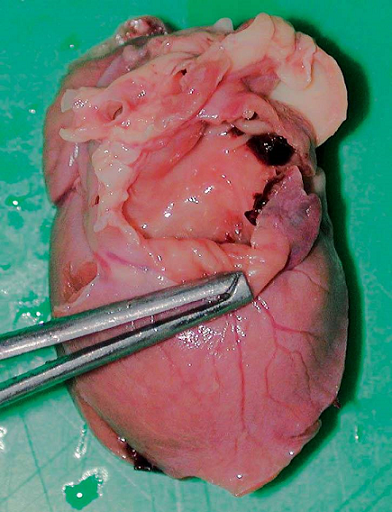Difference between revisions of "Rabbit Medicine and Surgery: Self-Assessment Color Review, Second Edition, Q&A 05"
Jump to navigation
Jump to search
(Created page with "{{CRC Press}} {{Student tip |X = helpful but could be usefully viewed with an image of a normal heart for comparison.}} <br><br><br> File: Rabbit_Medicine_and_Surgery_Q5.pn...") |
|||
| Line 19: | Line 19: | ||
</FlashCard> | </FlashCard> | ||
| − | To purchase the full text with your 20% off discount code, go to the [https://www.crcpress.com/9781498730792 CRC Press] Veterinary website | + | To purchase the full text with your 20% off discount code, go to the [https://www.crcpress.com/9781498730792 CRC Press] Veterinary website. |
[[Category:CRC Press flashcards]] | [[Category:CRC Press flashcards]] | ||
Revision as of 11:04, 22 November 2018
| This question was provided by CRC Press. See more case-based flashcards |

|
Student tip: This case is helpful but could be usefully viewed with an image of a normal heart for comparison. |
An 8-year-old male neutered, crossbred house rabbit is acutely dyspnoeic. The animal collapses and dies suddenly on presentation.
| Question | Answer | Article | |
| What are the lesion(s) observed in the photograph (see above) taken at postmortem
examination? |
The photograph shows the heart, which is pale and has hypertrophy of the ventricles. There is a thrombus firmly attached to the left atrial wall.
|
Link to Article | |
| What is the most likely cause of the postmortem changes in this animal? | The most likely cause of the observed postmortem changes is idiopathic hypertrophic cardiomyopathy. Other types of heart disease include other cardiomyopathies (dilated and secondary to chronic stress), myocarditis (secondary to Encephalitozoon cuniculi, Salmonella spp. or coronavirus infection), myocardial fibrosis, pericarditis (secondary to Pasteurella multocida or Staphylococcus spp. infection), valvular disease (mitral and tricuspid insufficiencies and endocarditis) and congenital defects (atrial and ventricular septal defects and haemocyst).
|
[[ Replace text with name and subsection of relevant WikiVet page if in existence eg. Feather - Anatomy & Physiology#Structure & Function |Link to Article]] | |
To purchase the full text with your 20% off discount code, go to the CRC Press Veterinary website.
